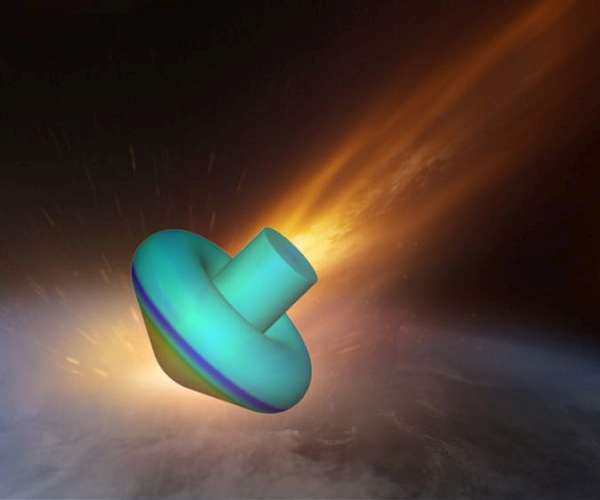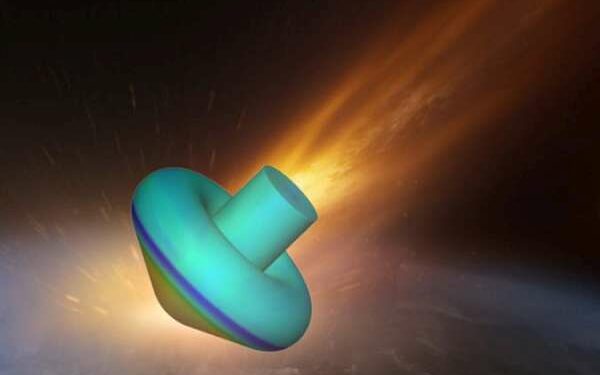
European Consortium Receives euro 15M for Inflatable Heat Shield Development
by Hugo Ritmico
Madrid, Spain (SPX) Jun 10, 2024
A European consortium, led by Spanish mission and system integrator Elecnor Deimos (“Deimos”), is working to develop an inflatable heat shield (IHS) for recovering rocket stages from space. This system could also protect cargo during re-entry and may be used for Mars missions.
ICARUS (“Inflatable Concept Aeroshell for the Recovery of a re-Usable launcher Stage”) has received euro 10 million in funding from the European Commission (EC) under the Horizon Europe programme (grant nr. 101134997). This project follows EFESTO-1 ( euro 3 million) and EFESTO-2 ( euro 2 million), funded by Horizon 2020 and Horizon Europe, respectively. ICARUS consists of three phases.
In the first phase, the consortium will complete the mission and system design and mature key technologies on the ground. The second phase involves a flight test on a sounding rocket with an IHS demonstrator in hypersonic conditions. The IHS will be approximately 50 cm in diameter inside the rocket and will inflate to about 3 m. A commercial full-scale version could inflate to a diameter of 10 m.
The third phase involves post-flight analysis of data and information to understand spacecraft behavior, evaluate technology performance, and verify simulation models.
The ICARUS project, estimated to take about four years, is set to kick off in June 2024, with a demonstrator test expected in 2028.
The consortium, led by Deimos, includes:
– German Aerospace Centre (DLR-MORABA and DLR AS-HYP): Flight test, launch campaign execution, and vehicle health monitoring
– Italian Aerospace Research Centre (CIRA): Vehicle thermal protection system
– French Aerospace Research Centre (ONERA): Vehicle aeroshape definition and pre- and post-flight characterization
– Pangaia Grado Zero (Italy): Innovative health monitoring sensors
– Politecnico di Torino (Italy): Dissemination and communication
– Atmos Space Cargo (Germany): Inflatable structure
– HDES Service and Engineering (The Netherlands): Inflation system
– Demcon Advanced Mechatronics (The Netherlands): Innovative health monitoring sensors
Simone Centuori, CEO of Deimos, said: “This is one of the most innovative projects of the decade encompassing a group of first-rate research organisations and companies. From EFESTO-1 to ICARUS, the development period is covering a total of nine years and euro 15 million of funding. ICARUS’ is a key technological enabler for Europe, which will revolutionise European re-entry technologies, supporting applications like recovering rocket stages and hypersonic entry on Mars.”
“ICARUS also signifies a great future contribution to space sustainability. With its potential to return launch vehicles and satellites elements safely to Earth, it can become a game changer to the launcher industry.”
“Collaborating with so many fantastic partners shows the power and potential of the European space landscape and the trust of all the partners in Deimos’s capability as project lead. This is a fantastic endeavour to use our expertise as a mission and system integrator to forge the various technologies and systems into a working product.”
Sebastian Klaus, CEO of Atmos Space Cargo, said: “Inflatable Atmospheric Decelerators are at the cutting edge of re-entry technology, and Atmos Space Cargo has been trusted by DEIMOS and its consortium partners to design and manufacture the inflatable structure.”
“ICARUS aims to become the first flight demonstration of this new technology for the European Union. Supporting this endeavour with our manufacturing and testing expertise is perfectly in line with our vision of returning any type of cargo from space, at any scale.”
Prof. Ali Gulhan, head of the department for supersonic and hypersonic technology at DLR’s Institute of Aerodynamics and Flow Technology, said: “To plan and integrate such a demanding payload for a sounding rocket flight experiment, including the respective wind tunnel testing in advance, will be a challenging and therefore exciting endeavour with a ground-breaking outcome. Together with our partners at DLR’s Mobile Rocket Base (MORABA) we will contribute with our long-lasting experience to make the flight experiment a big success.”
Jean-Marc Charbonnier, space program director at ONERA, said: “The consortium consists of an experienced team of high-level research organisations and industries that has already illustrated its performance during the successful EFESTO projects, which led to the ICARUS project. ONERA adds its internationally recognised expertise as the French Aerospace Research Establishment of the Armed Forces Ministry.”
“The inflatable heat shield of the project is a potential technological and system disruption. ONERA contributes through its expertise in the aerothermodynamic characterization of inflatable heat shield performance. Folding/inflation simulations will complete ONERA’s involvement in support of Atmos Space Cargo to carry out a successful demonstration.”
Inflatable heat shields, also known as inflatable atmospheric decelerators (IADs), could be a new way to decelerate and protect space systems during re-entry and descent. They could be ideal for commercial space transportation technologies aiming to recover and reuse launcher stages and other space cargo. Integrating guidance, navigation, and control (GNC) systems could enhance these capabilities and allow for precision-landing on Earth and Mars.
Inflatable heat shields are considered a game-changer due to their low re-entry ballistic coefficient, which reduces mechanical and aerothermal loads during re-entry. Deployable capsules can be easily accommodated in launch vehicles and deployed when needed. This makes them suitable for recovering and reusing segments of various space systems, making them more sustainable with less environmental impact.
Related Links
